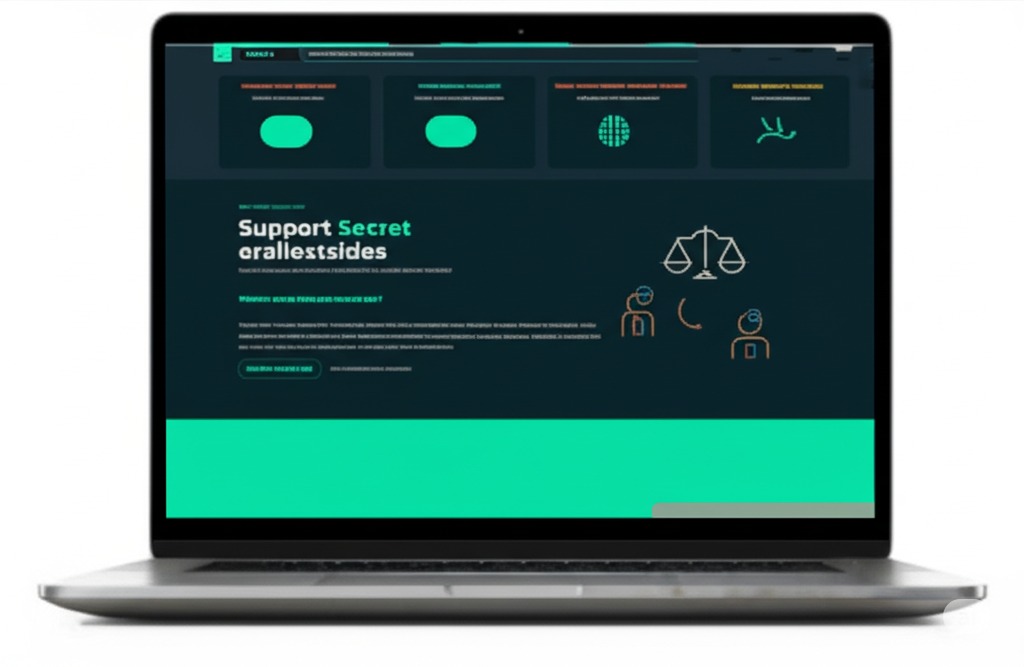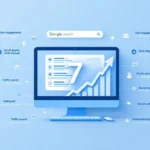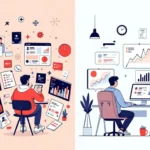
Have you ever poured your heart and soul into building a software product, meticulously crafting every feature, only to watch new users sign up, poke around for five minutes, and then vanish like a digital ghost?
I’ve definitely been there, and let me tell you, it stings more than accidentally hitting ‘reply all’ on an email you really only meant for your work bestie.
I remember one of my early attempts at a SaaS tool. I was convinced I had built the next revolutionary thing.
My onboarding process was, what I considered, ‘thorough.’ It was a detailed, 27-step tutorial guiding users through every nook and cranny.
I later discovered, much to my dismay, that most users abandoned ship by step three, probably finding more excitement in watching grass grow.
My definition of ‘thorough’ was, apparently, their definition of ‘tedious torture’! This experience taught me a valuable lesson: features and pricing are just one part of the puzzle.
Understanding human behavior is where the real magic happens for top-performing SaaS products.
Many founders get caught up in just adding more features or tweaking price points.
Successful products, however, delve deeper, tapping into the psychology of their users. Let’s explore some of these powerful, yet often hidden, psychological principles that can truly set your SaaS apart.
Key Takeaways Before We Dive In:
- Simplify the User Journey: Making your SaaS intuitive and easy to grasp from the very first interaction is absolutely vital for keeping users engaged and preventing early drop-offs.
- Frame Your Value Wisely: The way you present your pricing can significantly influence perception; guiding users to see the optimal value is often more impactful than the actual numbers.
- Cultivate a Sense of Connection: When users can personalize their experience and feel genuinely supported, they develop a stronger sense of loyalty and are far less likely to churn.
The “Effort Gap” Principle: Making SaaS Feel Effortless
We’ve all been there. You sign up for a new tool, full of hope, only to be met with a confusing interface or a lengthy setup process. What happens next? You likely close the tab and never look back. Users quickly abandon tools that feel like hard work. We call this the “Effort Gap.”
Why Users Give Up (The “Ugh, This is Too Hard” Moment)
People are busy. They want solutions that simplify their lives, not add to their cognitive load. If your SaaS requires too much effort to understand or get started with, users will bounce. They are looking for that quick win, that “aha!” moment where they see the value.
How Winners Bridge the Gap
Top-performing SaaS companies masterfully reduce this perceived effort.
- Notion, for example, recognized this early on. They grew phenomenally by minimizing setup friction. Offering templates and quick import options helps users get value almost instantly.
- Slack completely changed how teams communicate. Email felt heavy and formal. Slack made communication feel lighter and more dynamic with features like emojis and threads, reducing the effort of staying connected.
Your Action Plan: The “Aha!” Audit
Take a hard look at your onboarding process. How many clicks does it actually take for a new user to experience that core “aha!” moment? Scrutinize every step. Could you simplify it? Could you make the value pop sooner? A smooth, effortless start can make all the difference.
The Pricing Mind Trick: It’s Not Just the Price Tag
Pricing your SaaS product can feel like a tightrope walk. You want to be competitive, profitable, and fair. However, the real magic often isn’t just in the price itself, but in how you frame it.
The Power of Perception in Pricing
Human brains don’t always process numbers in a purely logical way. Context and presentation heavily influence our perception of value. A $50 product can seem expensive or a bargain, depending entirely on how it’s positioned.
Smart Pricing Strategies
Let’s look at a couple of clever psychological tactics:
- Anchoring: This is a classic. You show a higher-priced plan (e.g., a $99 “premium” plan) next to your target plan (e.g., a $29 “standard” plan). The higher price acts as an anchor, making the $29 plan suddenly feel much more reasonable and affordable.
- “Goldilocks” Pricing: Offering three options often works wonders. People tend to avoid the cheapest (fearing lower quality) and the most expensive (feeling it’s too much), gravitating towards the middle option as “just right.” A study published in the Journal of Consumer Psychology has explored how choice architecture, like offering a middle option, can significantly influence decision-making [1]. Calendly famously used a 3-tier model and reportedly boosted their conversions by 22% by guiding users to the best-fit, often middle, option.
Here’s a quick look at how these strategies play out:
| Strategy | How it Works | Common Example |
|---|---|---|
| Anchoring | A higher initial price makes subsequent options seem cheaper. | “$99 Pro Plan” next to “$29 Basic” |
| Goldilocks Pricing | The middle option is often perceived as the best value. | Three-tiered plans (Basic, Pro, Premium) |
Consider how you can apply these mind tricks to your own pricing page. You might be surprised at the impact.
The “Ownership” Hack: Making Users Feel Invested
People inherently value things more when they feel a sense of ownership or have personally invested effort into them. This isn’t just about financial investment; it’s about personal investment.
Why Personalization Creates Stickiness
When users can customize a tool to fit their specific needs and preferences, it starts to feel like their tool. This personalization creates a deeper connection and makes the thought of switching to a competitor much less appealing. They’ve made it their own.
Real-World Examples
Several successful SaaS companies leverage this “ownership” hack beautifully:
- Canva allows users to create “brand kits” with their logos, color palettes, and fonts. Once a user sets this up, Canva becomes deeply integrated into their workflow, effectively “locking them in” in a positive way.
- HubSpot offers customizable dashboards. Users can arrange reports and data points to see exactly what matters most to them. This personalized view makes the platform feel indispensable.
Data supports this too. Totango, a customer success platform, has indicated that tools offering customization features often see significantly lower churn rates, sometimes by as much as 30%. When users invest time in tailoring a product, they’re less likely to abandon that investment.
FOMO Engineering: The Gentle Nudge of Scarcity
Ah, FOMO – the Fear of Missing Out. It’s a powerful psychological driver. While you don’t want to be overly aggressive or manipulative, smart SaaS companies use scarcity and urgency subtly to encourage action.
Understanding Fear of Missing Out
Nobody likes to feel they’re missing out on a good deal, a limited opportunity, or something popular. This fear can prompt people to act more quickly than they might otherwise. Behavioral economists like Dan Ariely have written extensively on how such irrational forces shape our decisions [2].
Using FOMO Smartly (Not Aggressively)
The key is subtlety and authenticity. You don’t want to create false scarcity, as that can damage trust.
- Think of ZoomInfo’s waitlist tactic for new features or limited-time offers like “only 3 seats left at this price.” This creates a sense of urgency without being overbearing.
- Dropbox employs a social proof version of FOMO with team alerts like, “Your teammate just used [feature].” This not only highlights feature utility but also subtly suggests that others are benefiting, and you might be missing out if you’re not using it too.
These gentle nudges can encourage users to explore features or make purchasing decisions a little bit faster.
The Support Secret: More Than Just Fixing Problems
We often think of customer support as a reactive function – something that kicks in when a user has a problem. Fast and efficient support is definitely crucial for retention. However, the best SaaS companies take it a step further with proactive support.
Why Proactive Support is a Game-Changer
Proactive support aims to solve problems before they even arise or to guide users so smoothly that they avoid common pitfalls altogether. This approach significantly reduces frustration and builds immense goodwill. A study by Forrester Research found that improving customer experience, including support, directly correlates with increased revenue and customer loyalty [3].
Leading by Example
Here’s how some top SaaS companies nail proactive support:
- Intercom cleverly uses chatbots not just to answer questions, but to preempt them. By analyzing user behavior or common support ticket themes, their chatbots can offer timely tips or guidance, reportedly cutting down support tickets significantly, in some cases by up to 40%.
- Zapier provides excellent documentation, but they also specifically include sections on “common mistakes” or troubleshooting for frequent issues. This helps users self-serve and reduces the frustration of hitting predictable roadblocks.
Anticipating user needs and providing solutions proactively makes users feel understood and valued.
Final Thoughts
Building a successful SaaS product is about deeply understanding your users, their motivations, their frustrations, and their psychological triggers.
And that, my friends, is the secret sauce to building a SaaS product that people not only use but truly love.






